What Is E-E-A-T in SEO?
-
Abdul Wadood
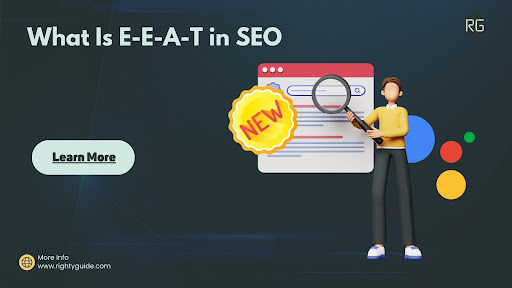
Google has always been ahead of the curve when it comes to upgrading its search algorithms to provide users with the best possible experience. In 2022, Google introduced the new notion of E-E-A-T, which stands for Expertise, Authority, Trustworthiness, and now, Experience, as a significant enhancement to its search ranking methodologies.
But wait, when E-A-T is already of high importance, then why Google added an extra “E”?
In this article, I will open up about everything about what is E-E-A-T. And why this is important in SEO.
So, let’s discuss this without any jargon!
What Is E-E-A-T in SEO?
Google E-A-T
Google’s method for determining whether or not a piece of material is high-quality and applicable to a user’s search query has relied heavily on the E-A-T triangle, which stands for “Expertise,” “Authoritativeness,” and “Trustworthiness”.
Google E-A-T first showed up in 2014
This trifecta of standards was designed to guarantee that the information shown in search results is not only correct but also derived from reliable resources. Google, however, saw that there was a major component of experience lacking from this method.
Yes, Now everything is going right why an extra “E”?
From E-A-T to E-E-A-T
Google has taken a huge step toward improving the search experience with the introduction of E-E-A-T by including the Search Quality Rater Guidelines. The inquiry put forward was both elementary and profound.
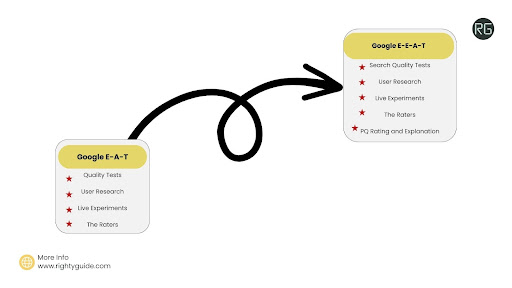
Does the content site not just have competence but also experience?
When creating content, it’s important to consider the author has personal experience with the things they’re writing about.
Google’s dedication to providing a search experience that matches the variety of ways individuals seek and absorb information is reflected in the company’s move to E-E-A-T.
This demonstrates Google’s commitment to providing its users with a wide variety of search results that meet their specific information demands.
To be clear, E-E-A-T doesn’t mean that Google is abandoning its commitment to quality results. Instead, it shows a more nuanced comprehension of how readers approach certain issues. Google’s ranking algorithms still put a premium on the quality of results, particularly in the most important areas where precision counts.
Google’s search raters use these principles to assess the efficacy of ranking algorithms, but they do not have any effect on where results appear. Instead, they act as a map for writers to follow in order to produce material that conforms to Google’s idea of a user-friendly search experience.
Creators may improve their content’s exposure in Google Search with the aid of Google’s specific tools, such as its instructions on developing useful, user-centric content.
Why is E-E-A-T important for SEO?
E-E-A-T feels more than reasonable as a strong signal. After all, in the real world, we prefer to get information or advice from reliable sources because we believe that they are qualified to do so.
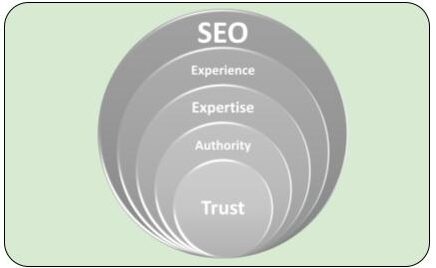
In the Google Search Central Blog, Google offers a prime illustration of this, pointing out that you should look for content created by an accounting expert if you’re looking for tax information.
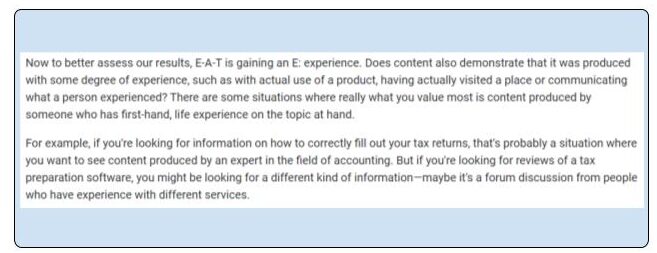
A highly sought-after source would be a tax advisor or accountant because they are authorities on the subject with years of experience, so we can trust what they have to say. We are certain to be receiving reliable information that is accurate.
To gain traction in SERPs and move your site to the top spots, you must demonstrate E-E-A-T since Google wants to give its users accurate information.
4 Pillars of E-E-A-T
Idea of E-E-A-T (experience, expertise, authority, and trustworthiness) and speculation on how SEO can affect these variables.
Let’s evaluate E-E-A-T in accordance with the previously stated established criteria, giving you a thorough grasp of its importance in the field of search engine optimization.
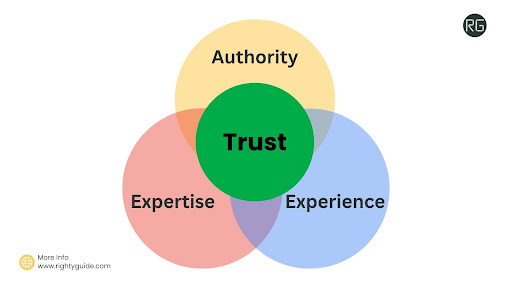
Experience
Think about what you know from actual life, notably your own personal experiences related to the subject at issue.
Relatable?
I believe that producing experienced content is more effective, and of course, only a person can write experience. The trend toward generative AI content in the digital realm highlights the importance of experience.
Artificial intelligence will never be able to replicate human experience. The most it can do is make guesses about the human condition, but the stuff it produces will be generic at best.
It’s quite unlikely that Google’s decision to include “experience” in its search quality raters rules came as a coincidence after ChatGPT became life.
What sets apart Content created by humans from that created by AI is their level of experience.
What is Experience?
- Sharing the people behind the website is a great way to demonstrate your expertise.
- Give the impression that you’re a legitimate business.
- Promote the knowledge and experience of your staff and the quality of the information and services you provide.
- Demonstrate that the site is backed by reliable individuals.
It is not necessary to overcomplicate things to accomplish this. Write your and the staff’s experience on the About Us Page.
Expertise
The level of knowledge shown in your article or by the writer is what is meant by expertise.
According to the evaluator standards, exhibiting expertise is significantly influenced by an author’s competence or trustworthiness on a subject.
Long Story short! some evidence suggests that the authority of a particular author may not have an impact on E-A-T.
While authoritativeness may not visibly impact Google’s E-A-T guidelines in this instance, it’s wise not to hastily disregard it. As AI-generated content advances and Google’s algorithm evolves, showcasing the author’s subject proficiency could prove beneficial. Moreover, expertise fosters reader trust, so I suggest including:
- The author’s name.
- An informative bio featuring:
- Pertinent credentials.
- Links to social media profiles.
- A Person schema encompassing relevant attributes like certifications or professions.
Authoritativeness
Authoritativeness measures how well-known a content provider is as an authority on a topic.
Three essential techniques are used to establish authority:
- constructing a comprehensive content structure that covers all topical topics
- obtaining links from reliable websites
- creating an expert-level digital profile or personal brand
Experience, knowledge, and authority are interconnected. Expertise and experience are prerequisites for authority, and vice versa.
Trust
We can see that authority, expertise, and experience all contribute to the formation of trust.
E-E-A-T development is a slow and steady process. Keep these fundamental pillars in mind while designing a content strategy to ensure effective SEO implementation.
How to improve your website's E-E-A-T
What exactly does E-E-A-T stand for, and how do you demonstrate experience, expertise, authoritativeness, and trustworthiness? We have learned so far.
SEO is held to a high standard of responsibility for delivering what is required to meet E-E-A-T standards.
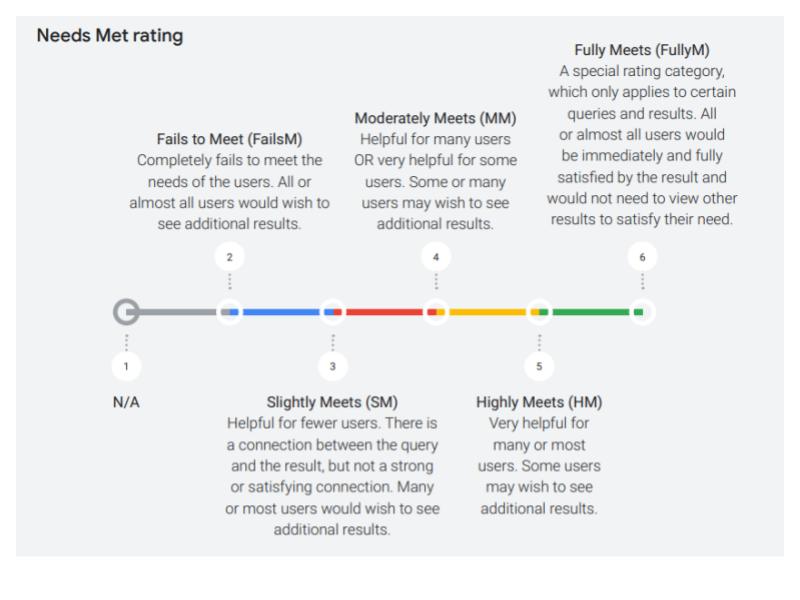
The good news is that the majority of diligent website managers, SEOs, and marketing teams are already taking the necessary steps and are currently developing E-E-A-T.
According to years of research after introduction to the market, I have recommended 10 things for E-E-A-T.
- Accurate Information
Verify that the accuracy of the information on your website can be easily confirmed. Give explicit references, cites, and sources for the facts and claims you make.
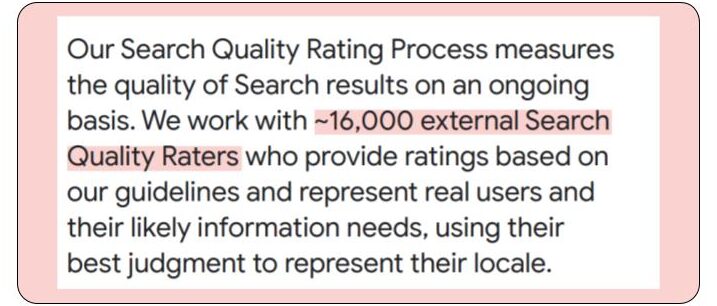
This fosters trust and enables customers to verify the information’s veracity. Cite reliable sources, link to official documents, and provide information to reputable groups.
Readers are more likely to rely on your content as a reliable source when you are transparent about the information sources you use.
- Organization Background
You may demonstrate the legitimacy of your website by stressing the existence of an actual business. Provide information about your team, such as biographies with photographs and backgrounds in the areas in which your team members work.
Please provide us with your phone number, email address, and physical address so that we may contact you. Showcase your organization’s aims, history, and any affiliations with respectable groups.
Sharing these aspects boosts the validity of your website and increases user trust. It increases credibility and reliability by ensuring visitors that they are dealing with a legitimate and respectable organization.
- Provide Authentic Service
Highlight your company’s expertise and the high quality of its goods and services. Display your team members’ credentials, experience, and qualifications.

Experts should demonstrate their knowledge via their biographies, credentials, and accomplishments. Create content that exhibits in-depth expertise of your industry while also providing fascinating and reliable information.
You provide value by offering extensive, well-researched, and up-to-date content. By highlighting the experience of both your personnel and your offerings, you can build credibility, attract your target market, and present your company as a reliable source of expertise and solutions.
- Transparent Back
Demonstrate the dependability and morality of the individuals who are supporting your website. Showcase verified customer or user testimonials that highlight positive experiences. Display recommendations from trustworthy individuals or organizations in your profession.
Tell anecdotes or personal stories that illustrate your reliability and honesty. To demonstrate accountability, address any faults or challenges in a transparent way. Respond swiftly to user comments and communicate freely.
By portraying the honest and morally upright individuals that manage your website, you establish a sense of legitimacy and trust with your audience. This encourages people to engage with your content and services with confidence.
- Reliable Contact Feature
Make it easier for others to reach you. Display contact information prominently, such as a functional phone number, email address, and maybe a contact form. Make sure to prominently show this information across your website.

If applicable, include a range of communication options, such as live chat or links to social media. Indicate the anticipated response times. A straightforward and easy-to-use communication approach encourages inquiries, develops connections, and increases user trust.
This accessibility demonstrates your commitment to engagement and support, promoting a positive user experience and increasing the validity of your website.
- Professional Design
Create a professional-looking website that is tailored to your intended purpose. Choose a simple, well-organized design that compliments your brand and content. Use a consistent color palette and typeface for a polished look.
Use menus with clear labeling to make navigation easier. Optimize for diverse devices to deliver a consistent experience across platforms. Include relevant graphics, multimedia, and images that are of excellent quality. Maintain a balanced and clutter-free visual hierarchy.
A professional design not only promotes credibility but also enhances aesthetics, allowing you to engage your target audience and deliver your message effectively.
- Professional User-Experience
Make a website that is both user-friendly and functional. Emphasize easy navigation with different menus and labels. Make information more accessible by structuring it logically. Use a simple and consistent layout across all pages.
Use a responsive design to allow for simple access on a variety of devices. Provide a search option so that people may quickly discover certain content. Provide concise and useful information while focusing on user requests. Use interactive elements like buttons and forms to increase engagement.
To ensure accuracy, information should be updated and maintained on a regular basis. You may increase user enjoyment, encourage return visits, and effectively achieve user goals by building a user-friendly and helpful website.
- Regular Content Update
Update the material on your website often to reflect new reviews and current facts. Update text, images, and data often to keep current. To signify recent changes, use a “Last Updated” date. Publicize fresh news, articles, or insights in your field.
Check sources and information on a regular basis to verify correctness. Encourage user involvement by soliciting feedback or comments that show active participation. You exhibit a commitment to being trustworthy and up-to-date by constantly updating your information.
This strategy not only attracts users but also promotes your website as a reliable and up-to-date resource in your business.
- Action with Promotions
Use caution when incorporating promotional elements such as advertisements and discounts. Take care not to overwhelm users with intrusive or overwhelming advertising. Make certain that promotions are seamlessly integrated into the content, complementing rather than interfering with navigation.
Promote valuable and relevant marketing to emphasize quality over quantity. Mark promotional content clearly to distinguish it from other forms of content. Strike a balance between selling your items and providing value to them.
By using moderation in your advertising approach, you create a user-friendly environment that fosters trust and connection, eventually serving the requirements of both your audience and the aims of your website.
- Minor Error Efforts
Strive for error-free content throughout your whole website, no matter how little it may seem. Examine the material for grammatical, spelling, and punctuation errors. Check links to ensure they function and will take you where you want to go.
Examine the data for accuracy and coherence. Test interactive elements like buttons and forms to verify they work properly. Conduct thorough quality checks on a regular basis to prevent any errors, no matter how little.
A perfect website exhibits professionalism, builds user confidence, and validates your commitment to delivering accurate information and a great user experience.
Conclusion
It is hard to establish which websites have high E-E-A-T because Google considers multiple characteristics. It may seem sophisticated, but it is a simple method for determining the worth of information.
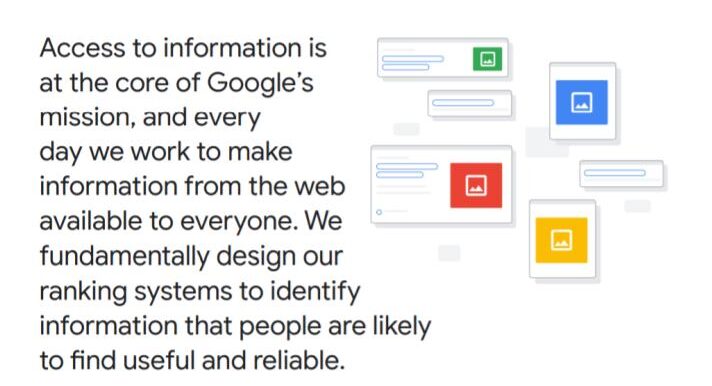
Serve online customers similarly to physical customers; identify and cater to their needs. Maintain and manage your website in the same way as you would a physical store.
This technique promotes commendable E-E-A-T. This guarantees that value and trust are created at each crossroads.
